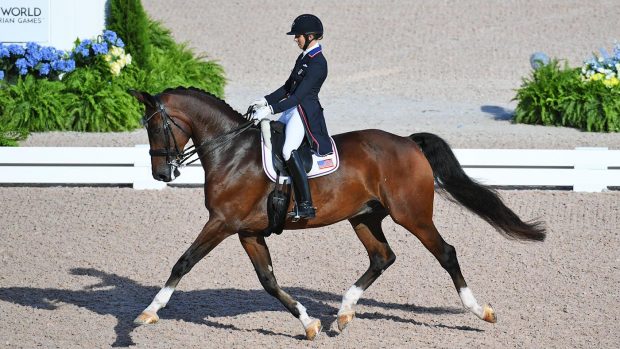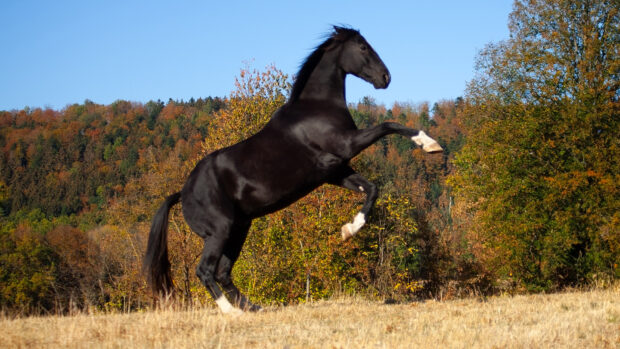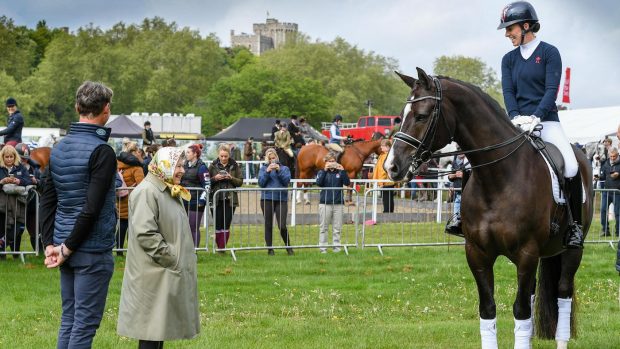Frangible fences are having a “significant positive” effect on eventing safety – but more development is needed to take the sport even further forwards.
Leading figures discussed the latest data and where progress could be made to increase influence and retain the essence of cross-country, while breaking new ground in eventing safety.
Dr David Vos, a rider, aviation engineer, frangible device expert and risk management steering group member, told the FEI eventing seminar on 20 January that 90% of serious horse falls are happening at non-frangible fences.
“Around 8% are happening at frangible fences that were built to the old standard, and somewhere around 1% or 2% are happening at fences built to the new standard we released in 2021,” he said.
“It’s not that there is a gigantic, main driver, but if we look at the distribution, you have square spreads, rolltops, brush fences, ascending spreads and corners capturing somewhere in the order of 70% to 80% of the serious horse falls by fence type.”
Expanding the use of frangible fences
Dr Vos stressed that the sport needs to focus on upgrading old frangible fences and expanding the use of frangibles “across the field”.
“It just has to happen,” he said. ”It’s probably the only way we can make a serious difference in cutting down the horse fall rate.
“We need to continue developing, moving forward at a pretty healthy clip to get more frangible solutions available and a bigger pool of available sets for course-designers to use.
“The push needs to remain very strong because we need to get that 90% non-frangible fence number way down, so that we can talk more about how frangibles are actually performing, and we’re not overwhelmingly driven by the fact that serious horse falls are happening at non-frangible fences.”
Course-designer Mike Etherington-Smith cautioned against measuring like for like when it comes to falls at frangible and non-frangible fences, adding that falls are multifactorial and other factors need to be taken into consideration.
Dr Vos added: “The most important point here is that all these other factors are critically important. But we’re dealing with a situation where we have a mistake that has occurred and is there a way to reduce the risk of a serious horse injury or fall?”
Course-designer Stuart Buntine said that there is “much work in progress” around frangible options and solutions for fences such as heavy logs and tables, rolltops and brush fences.
“Frangible fences are having a really significant positive effect and we must continue to drive that forwards,” he said.
Competition scoring considerations
Badminton course-designer Eric Winter touched on whether frangibles and flags could have a more enhanced and refined place in competition scoring, while keen to stress this should not be a “knee-jerk” decision.
For example, focusing on flags, shifting thinking towards riders getting the best line and approach to fences being rewarded with a clean sheet. While those who didn’t set up as well as they could have and take a flag aren’t necessarily out of contention for a top spot, but do carry two or three penalties.
“We can’t just have ever-decreasing cross-country courses where everybody jumps clear and nothing happens, because that’s not a sport that we can sell in any way,” he said.
“We’re looking at horses winning competitions through small margins – and that’s a positive thing, that’s elite sport.”
He added that it is “not acceptable in any way” to see horses fall, horses are now so educated to lock onto a line and not think about stopping, so where does eventing go to keep the sport interesting?
“We can’t have cross-country courses where everybody jumps clear, but I personally think that if we start to develop a thought process around the flags, that could be a very exciting sport,” he said.
“Another question we have to ask is, what we value about the sport nowadays – what are the things we want to keep? Is it that we must jump fixed fences? We must go to battle and win? Because to me that’s not what I hold dear about the sport.
“I want the horses to be galloping in the open, meeting different types of fences. It’s very important we keep a good variety of fences, that we keep using the terrain, so that every course has its own nature to it, and it uses the nature of that site.
“But how do we do that within acceptable parameters that can allow our sport to travel forward in the next 10,15 years in a very healthy way?”
Olympic gold medallist and eventing committee chairman David O’Connor concluded: “These are the big conversations we all need to have.”
You might also be interested in:

New standard for frangible cross-country fences could boost invention *H&H Plus*

Subscribe to Horse & Hound magazine today – and enjoy unlimited website access all year round

Eventing not yet confirmed for 2028 Olympics – with just weeks to decide on new format

‘You get very good feedback’: top coach’s idea to tap into riders’ expertise during competitions

Riders to be interviewed after horse falls as part of eventing safety move
Horse & Hound magazine, out every Thursday, is packed with all the latest news and reports, as well as interviews, specials, nostalgia, vet and training advice. Find how you can enjoy the magazine delivered to your door every week, plus options to upgrade your subscription to access our online service that brings you breaking news and reports as well as other benefits.



